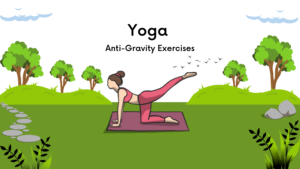Exercise is an essential component of diabetes management, and anti-gravity exercises can be a particularly effective tool for type 2 diabetics. These exercises, also known as low-impact exercises, are ideal for individuals who are looking for a workout that is gentle on the joints, yet effective at improving blood sugar control.
What are Anti-Gravity Exercises?
Anti-gravity exercises are a type of exercise that involves working against gravity in a way that is gentle on the body. These exercises can be performed using specialized equipment, such as an anti-gravity treadmill, or by modifying traditional exercises to reduce the impact on the joints.
Examples of anti-gravity exercises include:
- Cycling or using a stationary bike
- Swimming or water aerobics
- Yoga or Pilates
- Tai Chi
- Walking or using an elliptical machine
Why are Anti-Gravity Exercises Relevant to Managing Diabetes?
Exercise is a critical component of diabetes management, and anti-gravity exercises can be particularly beneficial for individuals with type 2 diabetes. These exercises can help improve blood sugar control, reduce insulin resistance, and improve cardiovascular health.
One of the main benefits of anti-gravity exercises is their low-impact nature. These exercises are gentle on the joints, making them ideal for individuals with arthritis, neuropathy, or other conditions that can make high-impact exercises challenging. Additionally, anti-gravity exercises can be an effective way to improve mobility and reduce the risk of falls, which is particularly important for older adults with diabetes.
Anti-gravity exercises can also be a great way to improve cardiovascular health. Regular exercise has been shown to improve heart health and reduce the risk of heart disease, which is a common complication of diabetes. Anti-gravity exercises can help improve blood flow, lower blood pressure, and reduce inflammation, all of which are important factors in maintaining heart health.
Finally, anti-gravity exercises can be an effective way to improve insulin sensitivity and blood sugar control. Regular exercise has been shown to increase insulin sensitivity, which can improve the body’s ability to use insulin to regulate blood sugar levels. Anti-gravity exercises can be particularly beneficial in this regard because they can be performed for longer periods of time without causing fatigue or discomfort.

How to Incorporate Anti-Gravity Exercises into Your Diabetes Management Plan
If you have type 2 diabetes, it is important to talk to your healthcare provider before starting any new exercise program. Your healthcare provider can help you determine what types of exercises are safe and appropriate for your individual needs.
Once you have the green light from your healthcare provider, it’s time to start incorporating anti-gravity exercises into your diabetes management plan. Begin by choosing exercises that you enjoy and that are appropriate for your fitness level. Consider joining a gym or fitness class that specializes in low-impact exercises, or invest in equipment, such as a stationary bike or elliptical machine, that you can use at home.
It’s important to start slowly and gradually increase the intensity and duration of your exercise routine. Aim for at least 30 minutes of moderate-intensity exercise, such as cycling or walking, most days of the week. If you have trouble finding time for a full 30-minute workout, break it up into shorter, more frequent sessions throughout the day.
Conclusion
Anti-gravity exercises can be a critical tool in the arsenal for managing type 2 diabetes. These low-impact exercises can help improve blood sugar control, reduce insulin resistance, and improve cardiovascular health. By incorporating anti-gravity exercises into your diabetes management plan, you can improve your overall health and reduce the risk of complications associated with diabetes. Remember to talk to your healthcare provider before starting any new exercise program and start slowly, gradually increasing the intensity and duration of your workout as your fitness level improves.






